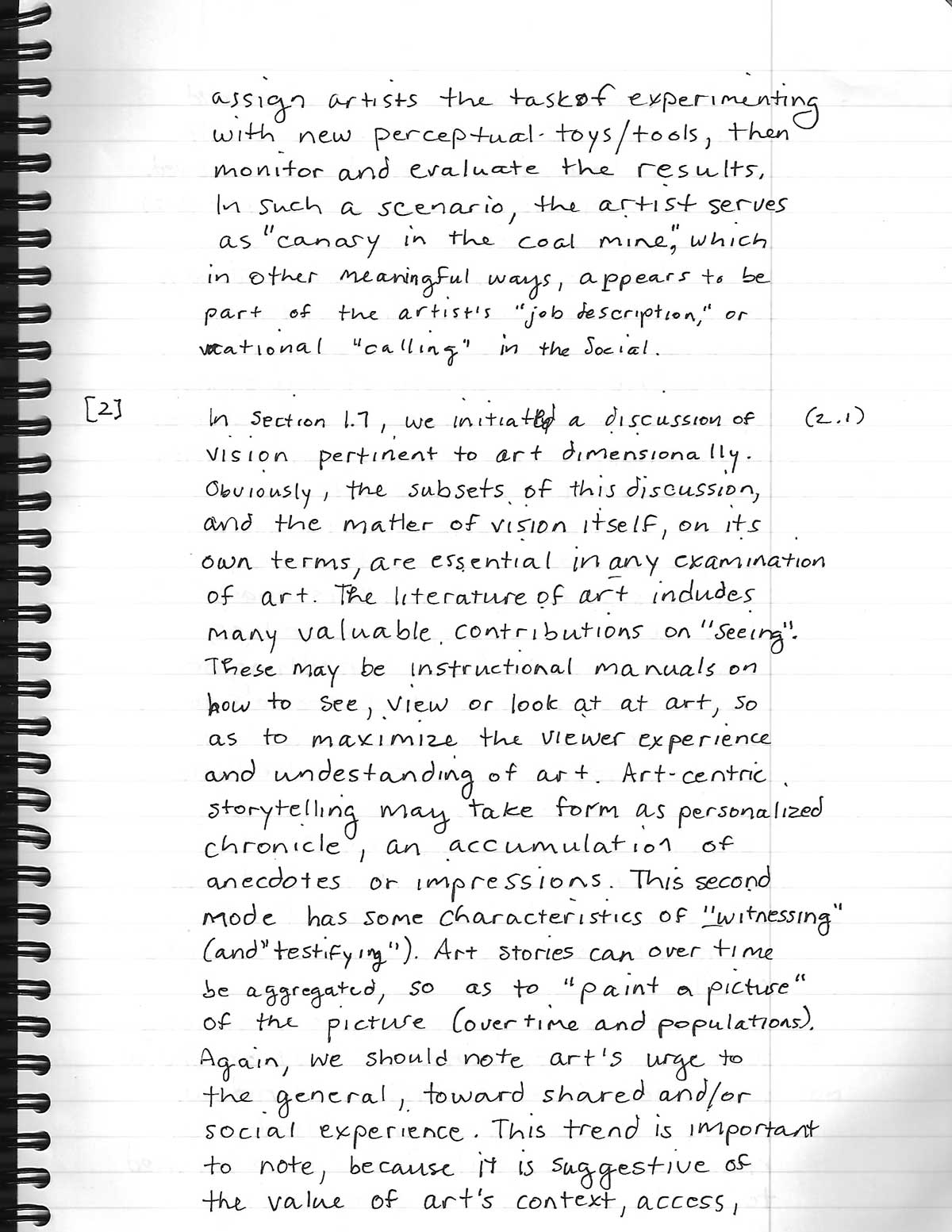assign artists the task of experimenting with new perceptual toys/tools, then monitor and evaluate the results. In such a scenario, the artist serves as “canary in the coal mine,” which in other meaningful ways, appears to be part of the artist's “job description,” or vocation/“calling” in the Social.
[2]
[2.1]
In Section 1.712, we initiated a discussion of vision pertinent to art dimensionally. Obviously, the subsets of this discussion, and the matter of vision itself, on its own terms, are essential in any examination of art. The literature of art includes many valuable contributions on “seeing.” These may be instructional manuals on how to see, view, or look at art, so as to maximize the viewer experience and understanding of art. Art-centric storytelling may take form as personalized chronicle, an accumulation of anecdotes or impressions. This second mode has some characteristics of “witnessing” (and “testifying”). Art stories can over time be aggregated, so as to “paint a picture” of the picture (over time and populations). Again, we should note art's urge to the general, toward shared and/or social experience. This trend is important to note, because it is suggestive of the value of art's context, access,
